Universal boiler type KDS+15kW for firewood, 5th class EcoDesign
The KDS+ type heating boiler is designed for heating with firewood in residential, workshop and other houses.
- Watch the product:
- Add feedback:
- Code: 0000001550
- Manufacturer: KONSTAL
- Manufacturer's code: 5906079680004
-
Availability:
 Exists
Exists
-
Price history
- Energy efficiency class: A+
- 8,500.00 zł 8,100.00 zł
- szt
-
Payment in cash, Payment via bank transfer, eRaty Santander Consumer Bank, Bezpieczny, szybki przelew - Przelewy24, Płatności Ratalne i odroczone
-
Check installments
-
Check installments
The product is shipped within 24 hours.
| Nominal boiler power [kW]: | 15 |
| Basic fuel: | hardwood type A with a moisture content of 12-20% |
| Area of the heated room [m2]: | 100-200 |
| Water capacity: | 70 |
| Chimney draft [mbar]: | 0,27 |
| Working pressure [bar]: | 1,5 |
| Water test pressure [bar]: | 4 |
| Charging chamber capacity [liter]: | 53 |
| max. operating temperature [C*]: | 90 |
| Total width [mm]: | 497 |
| Depth [mm]: | 635 |
| Height [mm]: | 1286 |
| Flue outlet diameter [mm]: | 155 |
| Connections [mm]: | DN 50 (lub na zamówienie) |
| Power supply [A/W]: | brak |

Class 5 wood-fired charging boiler, gasification boiler, ecological stove recommended for the Clean Air program that meets the PN EN 303-5: 2021 Ecodesign standard.
Fuel gasification

Gasification is the process of producing gas from wood that can be used as fuel. The process involves heating, which leads to chemical decomposition and gas production. It can then be used as fuel for various purposes, such as in a furnace. One of the main uses of gasification in the past was the use of holzgas to power cars during the war. Today, due to rising fossil fuel prices and increasing environmental pollution, gasification is gaining popularity again as a renewable energy source. This process, however, requires a suitable furnace adapted to obtain the gasification process. Our KDS is equipped with a unique and patented ceramic nozzle system. The type developed in our laboratory not only enables this process. The obtained emission results allowed to obtain the parameters required by the PN EN 305-5: 2021 standard, which classifies them as a class 5 device and ecodesign / ecodesign.
KONSTAL has developed its own design of a concentric nozzle. This solution is protected by an industrial and utility model. Outside air is supplied to the nozzle. The mixture burns in a vertical flue.
The use of a wood-fired boiler
Our KDS devices can be used in domestic and industrial boiler rooms. They will certainly prove themselves in single-family houses, boiler rooms of housing cooperatives, company boiler rooms in companies and enterprises.
Wood stoves can be installed in open system installations, the so-called overflow system with a tank at the highest point of the building. This solution is very safe because when the temperature increases, excess water, which increases in volume with the increase in temperature, is removed through the overflow. There is no pressure increase in this type of installation.
Our heat exchangers also allow installation in a closed system, the so-called diaphragm system, where the pressure increase is taken over by the diaphragm vessel with a rubber membrane. It should be remembered that such a system should contain a safety valve, which must be checked periodically.
Wood boilers are a popular heating solution among owners of single-family houses and outbuildings. Wood is a renewable resource and also relatively cheap compared to others. Properly designed and used, it can be a very efficient source of heat, ensuring comfortable living conditions and heating utility water. However, it should be remembered that they require regular maintenance, as well as the right selection of wood, which should be dry and properly prepared for burning.
Wood boilers are used in various types of buildings, from single-family houses, through public facilities, to industrial production plants. Their main purpose is to effectively and ecologically heat the space and produce domestic hot water.
They allow the use of a renewable raw material, which is logs, which, combined with high energy efficiency, translates into lower heating costs compared to traditional fossil fuel ones.
In addition, their use contributes to the reduction of greenhouse gas and dust emissions into the atmosphere compared to fossil fuel boilers, which translates into a positive impact on the natural environment and human health.
They are also a great solution for people who want to get rid of wood waste from their own garden or plot, thanks to which they can contribute to reducing the amount of waste and promote sustainable development.
It is worth remembering, however, that good quality logs are crucial for effective and trouble-free operation, and its improper use can contribute to the emission of harmful substances and have a negative impact on the natural environment.
Fuel in a class 5 boiler

Wood in the form of billets should be carefully prepared for burning in gasification furnaces. Necessary tree parameters are required because the expected effect may not be achievable.
After cutting, the wood should be cut to the appropriate lengths so that it does not get stuck in the hearth. Then they must be cut at least in half so that the moisture can evaporate freely from it.
Place the chopped pieces of logs in a ventilated room or under a roof. In such conditions, it should dry for at least 2 years. We measure suitability for combustion using a special moisture meter adapted to measure moisture in wood.
Properly prepared logs should have a moisture content of between 12 and 20%.
Intended for combustion, it should be properly prepared to achieve maximum efficiency and minimize the emission of harmful compounds. Here are a few steps to prepare them for burning:
-
Humidity: It should have a humidity of no more than 20% for maximum combustion efficiency. Storage in a dry place before use can help reduce humidity.
-
Size: Should be cut to size before burning, usually about 5-10 cm long and 2-5 cm in diameter.
-
Cleanliness: It should be clean and free of resin, tar and other substances that may affect combustion quality.
-
Storage: should be stored in a dry and well-ventilated place. Too long storage can increase the humidity, which can affect the quality of combustion.
-
Preparation: Before starting combustion, the heat exchanger should be thoroughly cleaned and checked if it is properly positioned and prepared for operation.
Preparing logs in accordance with the above guidelines will help you achieve maximum efficiency and minimize the emission of harmful compounds.
Modern class 5 wood boilers
 Our class 5 wood stoves are the perfect solution for those looking for ecological and effective heating. Our KDS+ charging boilers manufactured by KONSTAL PLESZEW are characterized by high quality and efficiency, which allows you to save on heating costs. They have an ecodesign certificate, confirming their environmental friendliness and efficiency. KDS+ offers the possibility of wood gasification and is an ecological device that perfectly fits into the new times. It allows for combustion in a completely controlled way, thanks to which it uses smaller amounts while maintaining higher efficiency than traditional ones. All our class 5 wood products not only offer savings, but are also safe and comply with the highest standards. We invite you to choose the perfect device that will allow you to heat your home ecologically and effectively.
Our class 5 wood stoves are the perfect solution for those looking for ecological and effective heating. Our KDS+ charging boilers manufactured by KONSTAL PLESZEW are characterized by high quality and efficiency, which allows you to save on heating costs. They have an ecodesign certificate, confirming their environmental friendliness and efficiency. KDS+ offers the possibility of wood gasification and is an ecological device that perfectly fits into the new times. It allows for combustion in a completely controlled way, thanks to which it uses smaller amounts while maintaining higher efficiency than traditional ones. All our class 5 wood products not only offer savings, but are also safe and comply with the highest standards. We invite you to choose the perfect device that will allow you to heat your home ecologically and effectively.
Convenience, economy and ecology in the use of central heating stoves 5th class

The use of an ecological and economical device gives many benefits. Firstly, wood is a renewable energy source, which means that burning it is more environmentally friendly than coal or gas. Secondly, ecological wood-fired boilers are designed to minimize the emission of harmful gases, which has a positive impact on air quality.
The economic benefits of using wood are usually cheaper than coal or gas. In addition, they are more efficient than older models, which means they use less fuel. As a result, costs can be much lower.
In addition, many countries offer financial incentives for people who decide to purchase and install such solutions. Such incentives can help reduce purchase and installation costs.
All in all, an eco-friendly and economical wood stove is good for the environment and your wallet, making it an attractive option for those looking for alternative ways.
KDS+ devices are environmentally friendly. Their emission is much lower than traditional coal and wood. Several conditions must be met to make the stove harmless to the environment:
- well prepared fuel
- installation equipped with an accumulation tank
- fixed operating parameters
- a suitable exchanger
The wood stove must be installed in a system with a heat buffer so that the parameters are constant, unchanged during burning.
Excellent choice of class 5 and ecodesign 15KW, 20kW and 26kW boilers
KDS+ type devices are an excellent choice for the current times where we have unstable prices. Currently, "heating" a house with wood is the cheapest source of heat. When installed with a buffer, it also becomes convenient because you do not have to burn the stove every day. It is a hot water accumulator for heating the building.
If I have an appropriate chimney draft, KDS+ does not require electricity. Because the combustion process is regulated only by means of a draft regulator. KDS+ ovens are excellent value for money. We invite you to familiarize yourself with our offer of class 5 boilers.
SOLID FUEL BOILERS - OLD AND NEW
What is the difference between old class 4 or non-class coal burning furnaces and modern class 5 furnaces. The difference is primarily in the thermal efficiency of the device. Old coal stoves were often 70-80 percent efficient. Any filler that meets the ecodesign requirements has an efficiency of over 90%. A modern wood gasifier is environmentally safe and economical. It can heat buildings from 50 m2 to 300 m2 with the installation of one device. Cascade systems can be used to heat a building with an area of more than 300 square meters
Class 5 boilers and the Ecodesign label
The 5th class certificate is a quality standard that defines high efficiency and minimal emission of harmful compounds into the atmosphere. This means that a device that has received this certificate is economical and reduces the negative impact on the environment.
Ecodesign, on the other hand, are standards and requirements for eco-design of products. By introducing to the market only devices compliant with the Ecodesign principles, the European Union focuses on increasing energy efficiency and reducing the negative impact on the natural environment. Ecodesign takes into account many factors, such as minimizing pollutant emissions, energy efficiency during the entire heating period, not only when the nominal power is reached, or the use of renewable energy sources. This makes Ecodesign more demanding than the Class 5 standard and helps to achieve even greater savings and environmental benefits.
PROTECTION OF SOLID FUEL INSTALLATIONS
Safe installation of the device without a feeder:
Open system
- overflow vessel
- heat buffer - accumulation tank
Closed system
- iaphragm vessel
- pressure valve set to maximum allowable pressure
- automatic cooling valve
- heat buffer - accumulation tank
How much electricity does a wood stove use?
In fact, our devices do not require electricity. However, electricity is necessary to power the circulation pumps and the installation controller.
Ask a question about the product. Our team will be happy to provide a detailed answer to your inquiry.
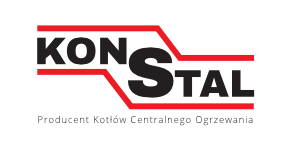
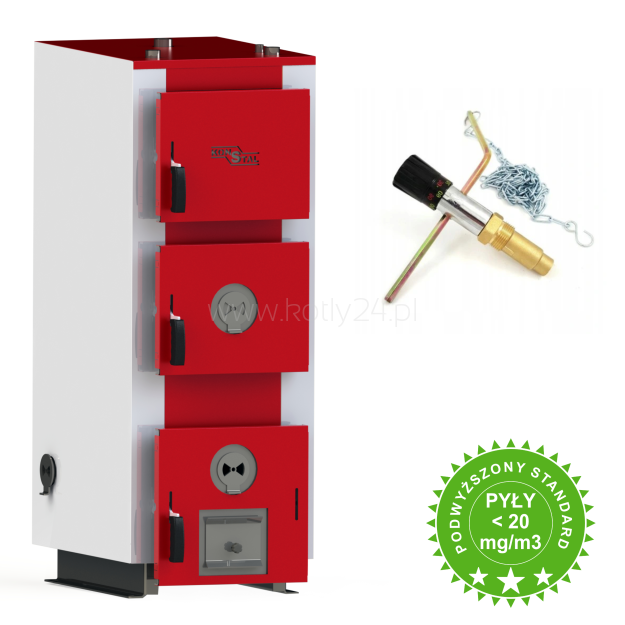

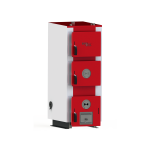

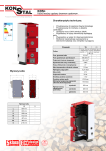




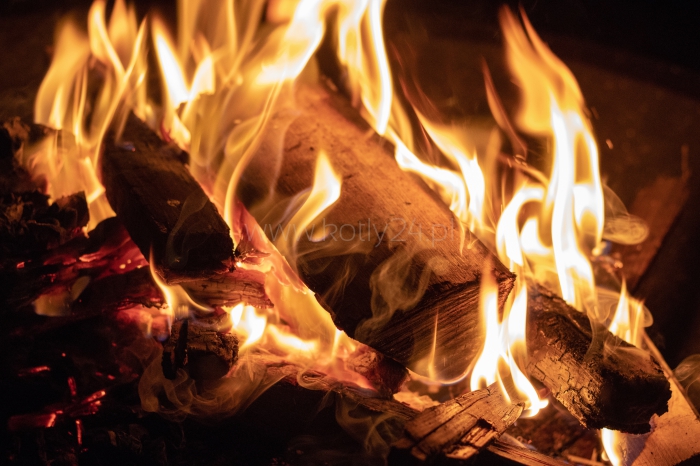
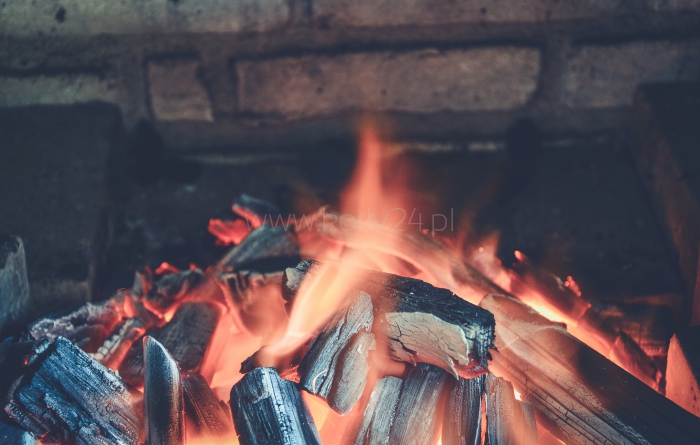


 Polish
Polish